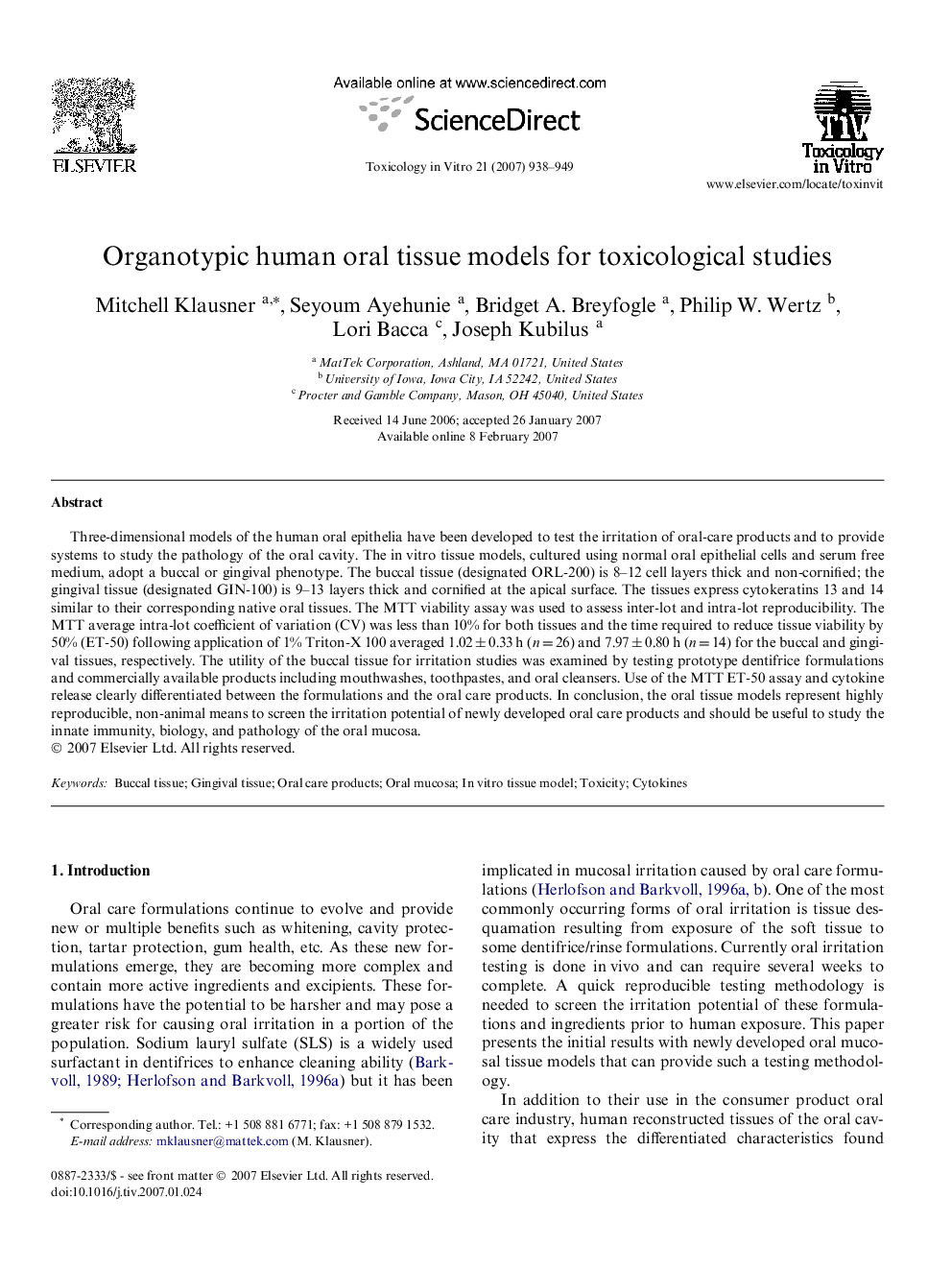| Article ID | Journal | Published Year | Pages | File Type |
|---|---|---|---|---|
| 2603172 | Toxicology in Vitro | 2007 | 12 Pages |
Three-dimensional models of the human oral epithelia have been developed to test the irritation of oral-care products and to provide systems to study the pathology of the oral cavity. The in vitro tissue models, cultured using normal oral epithelial cells and serum free medium, adopt a buccal or gingival phenotype. The buccal tissue (designated ORL-200) is 8–12 cell layers thick and non-cornified; the gingival tissue (designated GIN-100) is 9–13 layers thick and cornified at the apical surface. The tissues express cytokeratins 13 and 14 similar to their corresponding native oral tissues. The MTT viability assay was used to assess inter-lot and intra-lot reproducibility. The MTT average intra-lot coefficient of variation (CV) was less than 10% for both tissues and the time required to reduce tissue viability by 50% (ET-50) following application of 1% Triton-X 100 averaged 1.02 ± 0.33 h (n = 26) and 7.97 ± 0.80 h (n = 14) for the buccal and gingival tissues, respectively. The utility of the buccal tissue for irritation studies was examined by testing prototype dentifrice formulations and commercially available products including mouthwashes, toothpastes, and oral cleansers. Use of the MTT ET-50 assay and cytokine release clearly differentiated between the formulations and the oral care products. In conclusion, the oral tissue models represent highly reproducible, non-animal means to screen the irritation potential of newly developed oral care products and should be useful to study the innate immunity, biology, and pathology of the oral mucosa.
